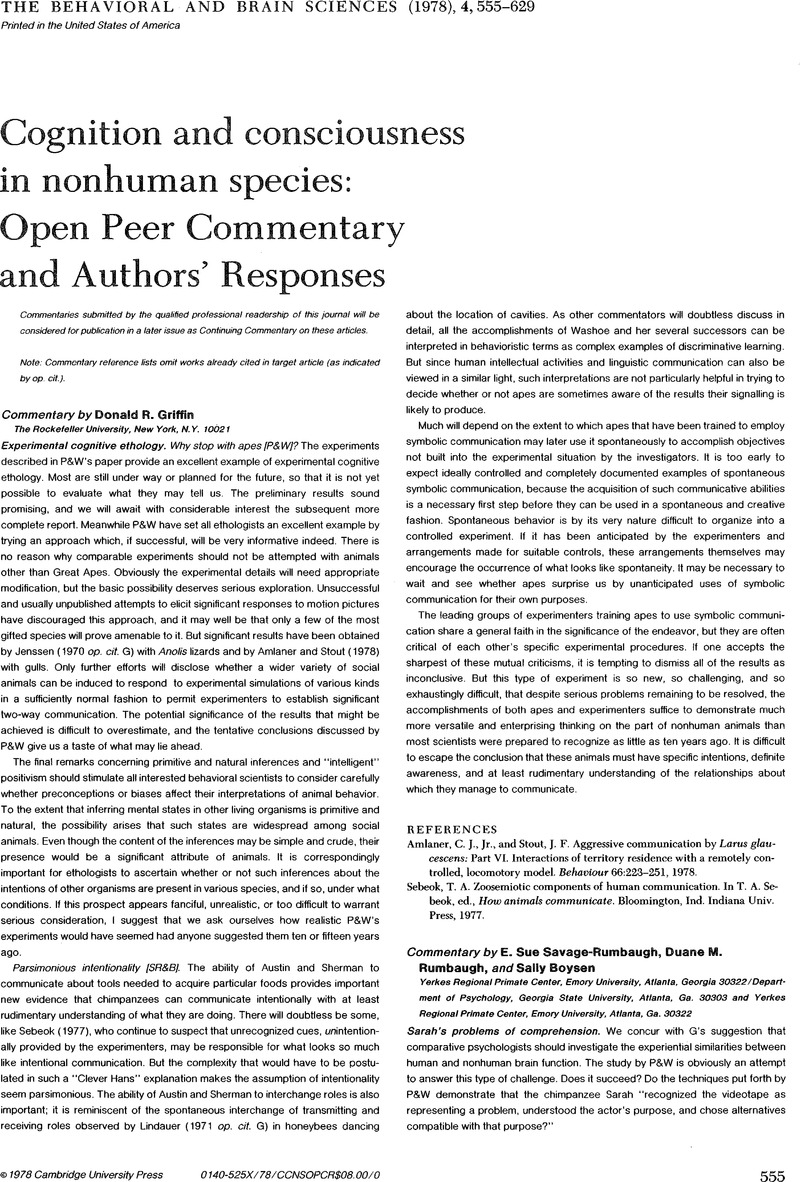No CrossRef data available.
Article contents
Animals and the rest of us: Descartes versus Darwin
Published online by Cambridge University Press: 04 February 2010
Abstract
An abstract is not available for this content so a preview has been provided. Please use the Get access link above for information on how to access this content.

Information
- Type
- Open Peer Commentary
- Information
- Behavioral and Brain Sciences , Volume 1 , Issue 4: A Special Issue on Cognition and Consiousness in Nonhuman Species , December 1978 , pp. 570 - 571
- Copyright
- Copyright © Cambridge University Press 1978
References
REFERENCES
Dingwall, W. O. The evolution of human communication systems. In Whitaker, H. and Whitaker, H. A. (eds.), Studies in neurolinguistics, vol 4. New York: Academic Press, in press.Google Scholar
Hodos, W. Evolutionary interpretation of neural and behavioral studies of living vertebrates. In Schmitt, F. O. (ed.), The neurosciences, second study program. New York: The Rockefeller University Press, 1970.Google Scholar
Huxley, T. H.On the hypothesis that animals are automata. Fortnightly Review, xvi:555–580, 1874.Google Scholar
Midgley, M.Beast and man: The roots of human nature. Ithaca: Cornell Univ. Press, 1978.Google Scholar
Wright, R. Imitative learning of a flaked stone technology – The case of an orangutan. In Washburn, S. and McCown, E. (eds.), Human evolution. Menlo Park: Benjamin/Cummings, 1978.Google Scholar

